-
Discovery points way to treatment of lethal toxin botulism
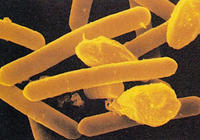
Botulinum neurotoxins are produced by Clostridium botulinum and cause the possibly fatal disease botulism, which impedes nerve cells’ ability to communicate with muscles and can lead to paralysis and respiratory failure. The botulinum toxin has also been identified as a potential biological weapon against a civilian population. Scientists have decoded a key molecular gateway for the toxin that causes botulism, pointing the way to treatments that can keep the food-borne poison out of the bloodstream.
-
-
Shutdown paralyzes U.S. food safety regime
Food safety experts this week said that the government shutdown is putting Americans at risk, as the shutdown caused all inspections of domestic food, except meat and poultry, to be halted. The shutdown comes on top of earlier budget cuts to food safety-related agencies, cuts which have already made the food safety inspection regime weaker, so that the shutdown, in the words of one knowledgeable observer, is “creating the potential for a real public health crisis.”
-
-
Drug-resistant Salmonella outbreak in seven states
The Centers for Disease Control and Prevention (CDC) said that seven strains of Salmonella Heidelberg bacteria have been identified as being linked to an outbreak in seven states. The outbreak, associated with Foster Farm chicken product, has so far sickened 278 people. The outbreak strains of Salmonella Heidelberg are resistant to several commonly prescribed antibiotics. The CDC unit tracking disease outbreaks has been working with less than half its personnel since the government shutdown began, and had had to call back thirty furloughed inspectors.
-
-
Helping farmers plow through new, complex food safety regulations
The recently passed Food Safety Modernization Act set safety standards on how farmers grow, harvest, and handle fresh produce to reduce the risk of foodborne diseases. The new regulations to minimize food safety risk include testing for water safety and better managing manure storage. Agricultural extension educators should take a flexible approach in teaching farmers about the changing landscape of food safety regulations, researchers say.
-
-
Bolstering water security in a crowded world
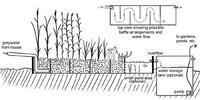
With limited water and the increasing number of people depending on it – there will be more than nine billion people on the planet by 2050 — water security is tenuous. Integrated water management plans using “blue,” “green,” and “gray” water, however, can increase water security by allowing agriculture to rise to the challenge of feeding a growing world population while leaving enough water for other uses.
-
-
“In 30 years Iran will be a ghost town” if the country’s water situation does not improve
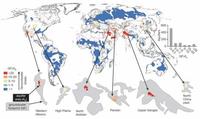
Issa Kalantari, a former agriculture minister during the presidency of Ayatollah Hashemi Rafsanjani and currently and advisor to President Hassan Rouhani’s cabinet, says Iran’s water crisis was especially grave. “Our main problem that threatens us, that is more dangerous than Israel, America or political fighting, is the issue of living in Iran. It is that the Iranian plateau is becoming uninhabitable”; “If this situation is not reformed, in 30 years Iran will be a ghost town.”
-
-
Today’s worst watershed stresses in U.S. may become tomorrow’s new normal
Nearly one in ten U.S. watersheds is “stressed,” with demand for water exceeding natural supply, according to a new analysis of surface water in the United States. What is more, the lowest water flow seasons of recent years — times of great stress on rivers, streams, and sectors that use their waters — are likely to become typical as climates continue to warm.
-
-
U.S. makes progress toward a National Water Census
Growing populations, increased energy development, and the uncertain effects of a changing climate magnify the need for an improved understanding of water use and water availability. No comprehensive and current national assessment of water resources exists, however. A USGS report released in April, Progress Toward Establishing a National Assessment of Water Availability and Use, fulfilled a requirement under the 2009 SECURE Water Act for the Secretary of the Interior to report to Congress on progress made in implementing the national water availability and use assessment program, also referred to as a National Water Census.
-
-
FDA to require imported food to be inspected at the source
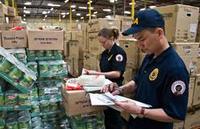
Each year about forty-eight million Americans get sick, some 128,000 are hospitalized, and about 3,000 dies from foodborne illnesses. Companies importing food into the United States will be held to higher safety and health standards if new proposed rules by the Food and Drug Administration (FDA) are passed. Under the proposal, the FDA would require importers to inspect food abroad before the food reaches American ports.
-
-
Crop pests spread as Earth warms, threatening global food security
Currently 10-16percent of global crop production is lost to pests. Losses of major crops to fungi, and fungi-like microorganisms, amount to enough to feed nearly 9 percent of today’s global population. These figures will increase further as global temperatures continue to rise, and a new study shows that global warming is resulting in the spread of crop pests toward the North and South Poles at a rate of nearly three km a year.
-
-
Tracking antibiotic-resistant strains of Salmonella from farm to fork
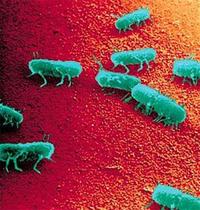
Every year in the United States, the various strains of Salmonella together are responsible for an estimated one million illnesses, 20,000 hospitalizations, and 400 deaths at an economic cost exceeding $3 billion. Salmonella Typhimurium accounts for at least 15 percent of clinically reported salmonellosis infections in humans nationally. The number of antibiotic-resistant isolates identified in humans is increasing steadily, suggesting that the spread of antibiotic-resistant strains is a major threat to public health.
-
-
Aquifer supplying a third of U.S. irrigated groundwater depleting quickly: study
The High Plains Aquifer of Kansas — also called the Ogallala Aquifer — supplies 30 percent of the U.S. irrigated groundwater. New study finds that if current irrigation trends continue, 69 percent of the groundwater stored in the High Plains Aquifer will be depleted in fifty years.
-
-
Nanoparticles in food pose health risks
Nanomaterials are increasingly used in water treatment, food packaging, pesticides, cosmetics, and other areas. There is a growing concern that these particles could pose a potential health risk to humans and the environment. In a new study, researchers have developed a reliable method for detecting silver nanoparticles in foods.
-
-
Heat waves to become more frequent, severe

Climate change is set to trigger more frequent and severe heat waves in the next thirty years regardless of the amount of carbon dioxide (CO2) we emit into the atmosphere, a new study has shown. In the first half of the twenty-first century, these projections will occur regardless of the amount of CO2 emitted into the atmosphere. After then, the rise in frequency of extreme heat waves becomes dependent on the emission scenario adopted.
-
-
The U.S. Food Emergency Response Network (FERN) tries to keep food safe
The U.S. Food Emergency Response Network (FERN) has 172 laboratories, including 39 federal, 113 state, and 17 local labs across the states and Puerto Rico. Randy Layton, FERN director, discussed the agency’s work in a July meeting of the International Association for Food Protection (IAFP).
-
- All
- Regional
- Water
- Biometrics
- Borders/Immig
- Business
- Cybersecurity
- Detection
- Disasters
- Government
- Infrastructure
- International
- Public health
- Public Safety
- Communication interoperabillity
- Emergency services
- Emergency medical services
- Fire
- First response
- IEDs
- Law Enforcement
- Law Enforcement Technology
- Military technology
- Nonlethal weapons
- Nuclear weapons
- Personal protection equipment
- Police
- Notification /alert systems
- Situational awareness
- Weapons systems
- Sci-Tech
- Sector Reports
- Surveillance
- Transportation
Advertising & Marketing: advertise@newswirepubs.com
Editorial: editor@newswirepubs.com
General: info@newswirepubs.com
2010-2011 © News Wire Publications, LLC News Wire Publications, LLC
220 Old Country Road | Suite 200 | Mineola | New York | 11501
Permissions and Policies
Editorial: editor@newswirepubs.com
General: info@newswirepubs.com
2010-2011 © News Wire Publications, LLC News Wire Publications, LLC
220 Old Country Road | Suite 200 | Mineola | New York | 11501
Permissions and Policies
